#mobile bilboard ads
Explore tagged Tumblr posts
Text

Connecting with Your Audience in 2024 using Mobile Billboard advertising
Hey there! Ever wonder how businesses manage to catch your eye while you're out and about?
Well, one way they do it is through mobile billboard advertising. In this blog post, we'll chat about what exactly mobile billboard advertising is, why it's so darn important, and how businesses can use it to reach folks in bustling cities like Los Angeles, New York, Chicago, Washington DC, Miami, Florida, Charlotte, North Carolina, and throughout California.
1. What's the Deal with Mobile Billboard Advertising?
Picture this: big signs plastered on trucks or vans cruising around town. These signs shout out a business's message, deals, or products. They're pretty hard to miss, right? That's mobile billboard advertising in action!
2. Why Should We Care About Mobile Billboard Advertising?
Think about it. We're bombarded with ads online and on TV all day long. But mobile billboards? They're different. They're right there in front of us as we go about our day in cities. Whether we're strolling down the street or stuck in traffic, those moving trucks make sure we can't miss their ads. That's what makes mobile billboard advertising so effective!
3. Where Can Businesses Use Mobile Billboards?
Anywhere and everywhere, really! These mobile billboards can hit up busy city streets, roll up to big events like festivals, or even cruise through neighborhoods where lots of people live. They're super flexible and can go wherever businesses want them to, making sure the right people see the ads.
4. Who Can Benefit from Mobile Billboard Advertising?
Whether it's a large corporation or your local mom-and-pop store, mobile billboards may help them spread their message. Mobile billboards can be used by political campaigns, non-profit organizations, and event planners to advertise their activities.
5. When's the Best Time to Advertise on Mobile Billboards?
Whenever there's a crowd! When everyone is moving at rush hour or during major occasions like holidays and festivals. Additionally, businesses can utilize them to spread the word about a new product launch or special deal.
6. How Can Businesses Get in on the Mobile Billboard Action?
Simple! They can collaborate with businesses that are experts in this form of promotion. These people can assist with anything from creating the advertisements to organizing the truck routes. Businesses may ensure that the correct people see their ads at the right moment by utilizing their expertise.
In summary:
There you have it, then! In 2024, mobile billboard advertising will be revolutionary for companies trying to reach their target audience. Businesses can ensure that a large number of people see their advertisements by attaching visually striking signage to trucks that go about the community. Mobile billboards are a useful tool for businesses, big or small, to contact their target audience and pique their interest in what they have to offer.
0 notes
Text
Explaining my JSR iceberg meme
I'm talking about this bad boy that started existing like 2 years ago.
There are other iceberg images, but they put all the info from the entire franchise in one image. IMO it muddles the focus and you can't put all the spicy trivia and theories in, so it's only JSR related. One game can hold a lot more mysteries(especially now, with 2 leaked prototypes).

Before i begin, here's a lil' intro. This image is symbolic to me, as it's a sign of how i really got invested in this game and franchise, and got into archiving things all JSR related because unfortunetaly the situation related to it is not really fresh and missinformation is far and wide,but situation is improving.
Gonna try to explain as short as possible. So look at the OG meme because i won't write full entry names and i will joke around. Also look at TCRF arcticle for JGR( https://tcrf.net/Jet_Grind_Radio_(Dreamcast) ) because it has a lot of stuff that i can't include. If you want a more detailed explanation on some entries, you can ask.
Enough with the ramblings, let's begin.
Level 1
Hi-Scool! Seha Girls! - anime with humanised Sega consoles. It has various game themed episodes and JSR was one of them.
Jet Grind Radio GBA and JP names - self explanatory. Despite not being released in Japan, it uses Japanese character names for unknown reasons.
Regional differences - literally every version of of JSR that exists, from the first Japanese release to the remaster and to the Android port, has some kind of difference. This one refers to the more obvious one's - the original release, international release and the updated version of the OG release. The most major one is the inclusion of a new storyline, 2 new levels, new graffiti, the tutorial level and a different credits sequence in international releases. Even some censorship! A lot of music differences too. There are even unused voice clips indended for the English versions of the game, where DJ K doesn't use Japanese words. For this one an entirely new post will be needed to explain it all.
Darksuitmen and Burger Queen - first one is in-universe movie ad and another is a fast-food joint from Shibuya-cho. Both have been changed at some point. Pictures can be found at TCRF. Funnily enough, Burger Queen returns in the remaster, alongside Burger Joint.
Beat's face texture - despite never appearing without the glasses, he has a face texture. This fact is well known and in the fandom.
JSR Guidebook - refering to the Jet Set Radio Perfect Guidebook that was only released in Japan. It's mostly known here for some included profiles that reveal info like age and height of some of the characters.
Level 2
JP dub - this fact is often overlooked but yeah, every character except DJ K have a different dub. A lot of them give characters a different feel entirely. Like, Yo-yo doesn't say "yo".
De la JSR - JP exclusive port that combines aspects of the OG release and international one's with some bug fixes.
Typing Jet - a Java typing game released in 2001 for Japanese mobile phones. As of now, this game is lost.
Swatch bilboard - unused in the final game, but somehow got the chance to appear in the Seha Girls anime. Wild.
Benten Burning Easter Egg - https://www.youtube.com/watch?v=6GoDxMX4xz4
Design differences and wrist watches - character designs are inconsistent in every art and game model. To list them all another post is needed. And the wrist watches that Tab, Gum and Beat have are very weird. Not only they don't appear in the art, but in early trailers they don't have them at all. What are they exactly?
Big Blackout - event caused by the Noise Tanks.
Dunny Boy Williamson Show - the most famous cut song from JGR.
Fictional brands and The Inu King - JSR features a lot of them. Rokkaku brands are plentiful and they show how powerful they are. A lot of ads and brands are parodies and have funny stuff. Some examples i compiled. The Inu King ad features Potts and maybe is a The Lion King parody. And the SB one is obvious.
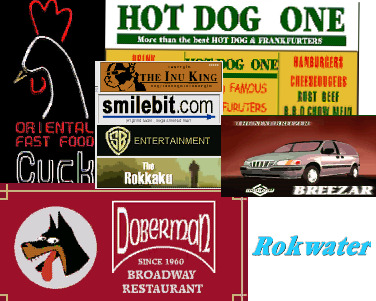
JSR slot machine- self explanatory. The most interesting part about it is unique animated footage that it has.
Love Trap intro - It shows Love Shockers dancing on a building and jumping off it. Where is that building and where do they jump off is unclear.
Lever 3
Noise Tank's records - JGR manual says that they record sounds of the city with the help of recorders that are attached to them.
GG's don't take Potts for walks - self explanatory info from the manual.
P.Jam can talk to animals - self explanatory info from the manual.
"paste long judge quote here" - this is Onishima's catchphrase from the JGR manual. He doesn't say it in game unfortunetaly.
Cube is dead - JSR GBA manual description reads: "This stylish goth girl may look dead, but not only can she skate, Cube can spray with flair!"
Unique voices and designs for rival gangs - in the JP release there are different sounds for each of the rival gangs during the tag battle. VA is the same, but the way the sounds are made are different. Play the game to hear them lol. Design changes are in all versions.
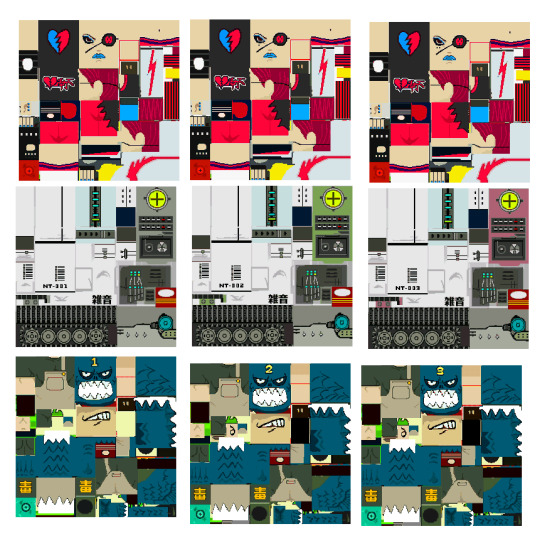
Early Cube, Combo and Coin photo - in JGR a placeholder texture can be found for the photo that appears in Chapter 2. TCRF article has the texture. In Aug 22 proto you can actually see it in action.
Dreamcast Express Vol. 5 - a demo disc type thing. It heatures the earliest known JSR gameplay trailer. And it has the only appearence of DJ K shoes! https://www.youtube.com/watch?v=CmKUJkvKmpM&t=8s
Ereki and version texture differences - i decided to combine these two, since they delve into one topic. Ereki is an early name for Beat that was discovered from one of his textures that was accidentaly left in the cutscene. JSR was rushed(it took 10 months to make it couldn't be not rushed) so early textures can be found left in some places. As soon as the cutscene that plays after the tutorial, in fact. The more versions there are - the more differences there are. Here some of the character one's moslty featuring names and minor design changes.

Cone - the apparent intended way of how Corn's name should be said. The proof is his logo and the pronunsiation of the name in Japanese, Kon.
E3 graffiti in the final game - a lot of assets that otherwise were replaced, still appear in the final game in the weirdest places like cutscenes or the Bantam Street train.
Slate in tutorial - in the demo that was included in Official Sega Dreamcast Magazine Vol. 8 and in the E3 demo, Slate replaces Tab.
DJ K rap - one of the many unused audios are rap numbers from the man. One is in English and the other is in Japanese.
P.Jam alt mask - in one of the vids from JSR slot machine, P.Jam can be seen wearing a mask with the letter P on it. Pic included in the meme.
The cat warehouse - everyone knows about the cat room from JSRF, but no one really talks about from one in JSR. There are less cats, but still.
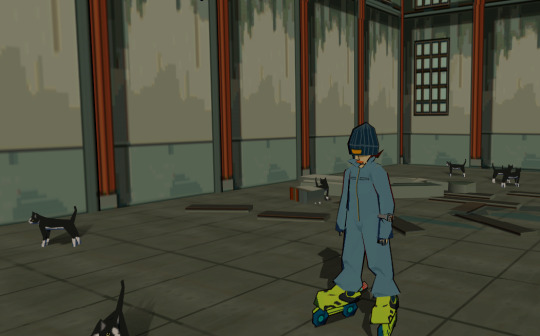
Potts in Grind City - what da dog doin in chaper 2 cutscene
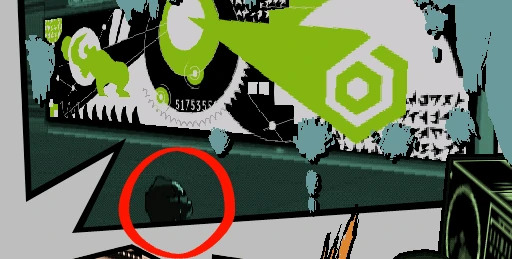
Towers in Bantam -

Level 4
Noise 66, Code, Nuts, Reco, Plug(Pench), P. Jam Black - various early names for playable characters thay can be found in the game files, referenced in graffiti and in the prototypes debug mode. These are names for Noise Tanks, Slate, Piranha, Cube, Garam, Unmasked P.Jam respectively.
Angry Onishima and Goji - both of these have an angry expression and Goji only has this one on his cutscene model. Possibly these were made for some cut cutscenes, or a gameplay thing in Onishima's case. Fun fact: Onishima has an unused voice clip where he yells WHAT THE-!? so maybe these are related. Also don't ask what is going on with Goji's textures.

Removed broken cop bike - a removed occurance that can only be found functional in E3 demo. Small pic is included in the meme. Bike that in the final game just crash into youand then rides away to despawn, actually were intended to fall over and stay in the level. The only reminence of the broken bike left in the final, is a texture. Rider is also depicted visibly injured there.
Unused spicy movie poster - look at TCRF article for more details.
e_mu_elec_001 - possibly unused audio that was intended to play in Grind Square. No matter what i did i couldn't trigger it in game. Also dude from the audio sounds like Hayashi. Listen to it here: https://youtu.be/NBCELA4IhGc?t=258
E3 2000 JGR stage show - https://www.youtube.com/watch?v=4XUL3Mui-gc
Gum picture in DJ K studio - it's just there. Does it mean that Gum is famous? Why K has it in his studio?
K and taxes - DJ K description from the JP JSR site tells that he knows everything about Tokyo-to, except how to write an income tax return. Yeah right.
The Rokkaku movie - referencing the ad from Bantam street. There is a possibility of Goji documentary movie being real.
Pink poet - aka Pink no Shijin, DJ K informant from Benten-cho. The guy that first got the news about the Devil's Contract. He is sort of an inside joke to me bc no one remembers him, and my first journey in the wiki stuff was writing an article about him on the old JSR wiki.
P.Jam with bats - concept art from the JSR documentary. Look at the art from there here: https://dedtoot.tumblr.com/post/642133419186372608/jet-set-radio-concept-art-but-now-you-can-look-at
Aug 22 build voice clips - this prototype revealed that in the final game some characters had their voice clips trimmed. I only noticed it with Piranha and Tab. I didn't check other characters for this thing, but here the Piranha sound. First the proto, next the remaster: https://www.youtube.com/watch?v=hM2Y6SeA5M4
Aug 22 build loading screen - this random loading screen appears here and nowhere else.
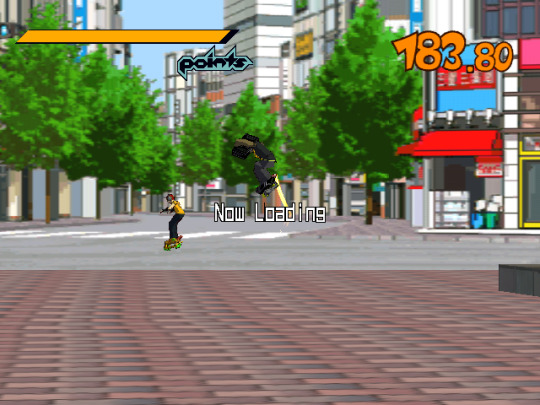
Unused breathing noises - like in JSRF, characters here have a voice clip with them breathing heavily. Maybe they are not unused, but i definitely didn't hear them in the remaster. Does anybody know how to trigger them?
Slate's face - i had a nightmare about how i found a texture with how slate's face actually looks like and it scared me very much. It's funny so i put it in the meme. It's not the only weird dream i had but puting the other one's would be too strange.
digi - one cool person from asked me to put them in the meme so they are there.
Final Level
Removed Golden Rhino car - the enemy that can be found in the E3 version. interestingly enough, it's not the only instance of the cut car enemy in this franchise. Watch it in action: https://www.youtube.com/watch?v=5C4Gr_udZd0
Aliens - mentioned in one of the DJ K cutscenes. Are they really real?
Onishima's problems - JGR manual says that he hates young people because of some past trauma. One line from the JP JSR website description, that was removed from the JGR description, says that he claims to be able to live for a week entirely on booze and cigarettes. He is not ok at all.
Noise Tanks experiments - whatever the hell they did on Potts???Why???
P.Jam kidnapping incident - JGR manual says that they tried kidnapping a pretty girl, but stole a mannequins instead. They were playing up the old monster movie cliche card to a tee.
Garam moment - The sonic skull he has.
Gouji Laboratory - a sign from Bantam Street. What the lab does? What it develops? Is it related to Goji's son? No one knows.
Fantastic HA HA HA HAAAA Band - E3 version includes some unused music tracks in it's files, specifically two songs from Fuzita Blender that didn't made it in the final game. Ripped audios can be heard here https://www.youtube.com/watch?v=w9M1_kX8hiQ&t=6s https://www.youtube.com/watch?v=YemnBIbUJaQ&t=28s
(UPDATE: it turned out the Fuzita Blender music thing was mentioned way back in 2013 in one of the Hideki Naganuma's tweets.(https://twitter.com/hideki_naganuma/status/341608944495648768?s=21&t=LTdpJxzxzZKK2ce5cE1Zpw) So i guess some real hardcore fan could know about it.)
JSR demo voice clips and sukebo - the demo includes 3 voice files, m, f and sukebo. The first two may be placeholders, but the last one may be for a cut character, that used a skateboard. All 3 files, go in the order that i said here(volume warning): https://www.youtube.com/watch?v=XQ7H9mJ-5RA
E3 version features more destruction - E3 version weirdly had more stuff related to destroyed enemies vehicles, instead of driving away and despawning, they stayed on the map. E.g. cop car from the first Kogame-cho level didn't crashed into a fence and fell in the water, but instead crashed and fell on the stairs and stayed there. The game is in general more chaotic. I assume that all of these were removed for optimisation and lack of time reasons. But it makes me wonder, what JSR could've been with more powerful hardware, experience and time?
ко рн без трусів - cmon now.

#one of the biggest recources in this was TCRF#without them i wouldn't be as interested in this sort of deal#and some other awesome people from this comunity#jet set radio#my stuff
54 notes
·
View notes
Text
To be fair, that Anish Kapoor work was a terrible, terrible curating job. I don’t doubt Anish Kapoor insisted no extra safety was added to the work because it would disrupt its charm (as most artists of his liking are) and that Serralves licked his ass (a portuguese article said there was a contract signed which implied “taking responsibility for any incident pertaining to the work, and demanding a staff member to accompany it at all times for safety measures” which isn’t nearly enough and for once we need to stop demanding of staff, underpaid members who stand on their feet for 9h a day to be super-human vigilantes of crazy tourists).
I don’t know if the work has any warning whatsoever regarding it being a safety hazard (you might think - but who would simply fall into it except if not crazy tourists, and unintentionally? And I say to you: children. A person with lower mobility. Handicapped people. Someone simply distracted. Museums aren’t just for able-bodied people, it’s a shame curators tend to forget that), but from what I read it doesn’t, which adds to the museum’s incompetence (nothing surprising from a contemporary art gallery, tbh)
As I said, I don't doubt Kapoor insisted the work must not be tarnished by anything - a barrier of sorts, a line on the floor, a big bilboard telling people to stand back and be cautious - and that the museum simply abliged by his demand, which I am inclined to believe happened given the nature of the contracted signed (lmao my man outright put the blame in the museum IN CASEa nything happened), but if that truly is the case than that is a terrible curating job. I mean, sure yeah it kind of disrups the mood of the work, but 1) it's Anish Kapoor fuck him, and 2) I would prefer to get negative reviews on one work than seeing a child fall down a 2,5m hole.
(I need to look into this a bit further)
#what's surprising is that Serralves is a great institution#so I really am curious as to how that happened
28 notes
·
View notes
Text
Africa’s Mobile Money Boom
New Post has been published on https://perfectirishgifts.com/africas-mobile-money-boom/
Africa’s Mobile Money Boom
In October, the US-based startup Stripe announced that it would be acquiring Paystack, a Nigerian payments platform. Everything about the transaction checked appropriate “synergy” boxes. Earlier in the year, Stripe had received an additional $600 million in funding, with an eye towards international expansion. Paystack has been dubbed the “Stripe of Africa,” due to its focus on simplifying the online and offline payments experience for consumers in the region.
One the face of it, one could say this was just another day in fintech deal-making, right?
Not so fast.
Stripe’s acquisition of Paystack underscores the increasing attractiveness of emerging markets, particularly those in Africa, for growth. This region has long been on the radar of public and private investors alike, however volatility, political instability, and under-developed infrastructure have been proven to be formidable foes in the journey towards consistent outperformance.
The US fintech startup Stripe made a splash this year with its acquisition of the Nigerian payments … [] platform Paystack.
Recently, the tide has shifted. Paystack is not the only African startup that has caught the eye of foreign investors. Chipper Cash – a San Francisco-based startup that offers mobile-based P2P payments in 7 African countries – raised a $30 million Series B round from Ribbit Capital and Bezos Expeditions. WorldRemit, a UK-based cross-border payments platform, announced the $500 million acquisition of Sendwave, a digital remittance service provider concentrated on East Africa, in August of this year.
When analyzed as a cohort, these transactions highlight three points. First, the rise of “mobile money” and its importance in constructing a digital banking infrastructure. Second, the upheaval due to COVID-19 of people’s habits. And third, how this activity in 2020 was the culmination of a decades-long journey.
What is mobile money?
Simply put, “mobile money” refers to digital payments. Unlike an app like Venmo, no bank account is required to facilitate the transaction – a telecom provider performs this function instead. According to the Wall Street Journal, “nearly half of 1.04 billion registered mobile money accounts world-wide are in sub-Saharan Africa.”
LAMU TOWN, KENYA – DECEMBER 20: An advertising bilboard for safaricom telecom company mobile payment … [] called mpesa, Lamu County, Lamu Town, Kenya on December 20, 2017 in Lamu Town, Kenya. (Photo by Eric Lafforgue/Art In All Of Us/Corbis via Getty Images)
Mobile money accounts are prevalent in emerging markets for a reason. One McKinsey study estimated that, “two billion individuals and 200 million small businesses in emerging economies today lack access to formal savings and credit.” The implications of non-participation in the formal economy are huge. The same report cites that, “…widespread adoption and use of digital finance could increase the GDPs of all emerging economies by 6 percent, or a total of $3.7 trillion, by 2025. This is the equivalent of adding to the world an economy the size of Germany.”
COVID-19 has accelerated adoption
While these challenges were readily apparent pre-COVID, the pandemic has accelerated the pace of adoption significantly. African governments have also played a large role – many have reduced barriers to sign up, in an effort to stimulate the economy. Before the lockdown in Rwanda, for instance, the central bank instructed telecoms to ease up on restrictions.
African countries have emerged as leaders in mobile money adoption.
The result was a huge increase in the number of transactions, “…the number of mobile-money transfers doubled in the week after a lockdown was imposed in March…by late April users were making 3m transactions a week, five times the pre-pandemic norm.” Other African governments, from Kenya to Zambia, followed suit in easing restrictions and waiving transaction fees.
Hiding in plain sight
Mobile money is nothing new – even before the pandemic, African countries were trailblazers in the industry. Per McKinsey, “Just over half of the 282 mobile money services operating worldwide are located in Sub-Saharan Africa.” Today, it is not uncommon for more citizens to have access to mobile money than a traditional bank account, as the graphic below illustrates:
What’s even more impressive is that there is still ample room for growth. Per the Wall Street Journal, only 45% of the African population has an active cell phone. To put this into perspective, in Europe, that figure hovers well above 80%. How these figures will be affected by the pandemic is anyone’s guess.
What’s next?
COVID-19 may have served as a catalyst for increased mobile money adoption, however, it has also left a trail of financial destruction in its wake. As the Economist writes, “… the crisis has also made people poorer. In Kenya, where mobile money is well established, the central bank reports a 10% rise in the number of daily transactions but a 5% fall in their total value.” The same article notes that these effects are expected to be temporary and that, “…habits formed during a crisis can sometimes outlast it.”
What does the future hold for mobile money in Africa?
Now that telecoms providers have tapped into a larger consumer base, the playing field is open to the introduction of other banking products, such as saving and lending offers. As Amanda Wilson, creator of the finance YouTube channel We Think Finance states, “The continent of Africa not only has an abundance of natural resources, but also an abundance of talent. And with the current tech startup scene not only in Nigeria, but in South Africa, Egypt and even Kenya, seeing this activity helps to show the world what is happening on the continent and I think in turn this will fuel more innovation.”
The wealth of resources created by this digital infrastructure is undeniable. The race to best harness these accounts and assets is on.
More from Fintech in Perfectirishgifts
0 notes
Text
Final Evaluation & Reflection
When we were first briefed this unit, I was so torn between many of the briefs, It took me quite a while to decide which to do. Initially, I explored many of the briefs to see of any of my scamps would spark further development. After this, I scamp as many ideas as I could to show to my sign up tutorial sessions as I was really struggling to pin down which one to focus on. Having a sign up tutorial really helped to push which ideas were working and which I could rule out completely. I still couldn’t narrow my options until one of the first tutorial sessions back after the christmas break where Sally and the other tutors helped me to break down the Rexona brief. After receiving more constructive feedback from group tutorials, I felt confident to go forward with the Rexona brief as it was a broad idea they wanted.
At this stage, my research process was extremely broad too. Much of my research was based around modern dance campaigns, Rexona’s dance partnerships (which sparked my final outcome) as well as charities that used dance to community and celebrate an idea. Whilst the brief was very open, this also became a challenge as I felt much of the research and campaign work I discovered had all been covered so where I felt I was being orginal, a concept would have already thought of. I tried to not let this put down my ideas. I saw this just a huge source of inspiration instead and that there are bound to many ideas that simply cross over eachother. Once I had settled on my final idea and concept, my research became more focussed on interactive adverts and guerilla advertising as I felt this would be a good technique in enticing the audience. I also briefly touched on webpage and UI design layouts
Developing my final outcome was the most challenging. As mentioned previously, I felt many ideas had already been done before due to dance being such a huge topic to base an idea around. I trialed and errored a few different ideas but I still felt I was struggling to come with a strong enough idea. This mean’t that towards my more recent tutorial sessions I was not providing much of a grounded concept to talk about. However, receiving tutor and peer feedback really helped me to think how I could link my ideas much more around dance. I was also given good research sources to look at. A good point that was made was to think about ‘dataplay’ which Rexona mentions in their brief. Admittedly I was stuck on how to represent this in my final outcome, however I feel that its not a strong enough component to my concept but this is something I could definitely improve upon if I choose to submit to D&AD. Shortly before our final presentations, I had settled on a livestreaming in-app experience using a spotlight generator to broadcast an audience and stage participatory connection. My general feedback for this idea pleasantly surprised me as it was well received and everyone agreed the name ‘Spotlight’ was a very appropriate name and nice concept that I had explored. Any constructive criticism I was given, I took on board and made the changes suggested.
On a whole, I’m happy with my final outcomes and concept however If I had more time, I would go back and refine the dataplay touchpoint as well as the social media aspects as I definitely prioritised the livestream visuals first. Although the new design and layout is similar to my previous visuals, I felt that I have refined them a lot more to feel less dated and more contemporary. Generally, I managed my time well throughout this unit. I think If I had a little more time ondeveloping my final outcomes, I would have tried how my designs and concept worked on a mobile phone format as mobiles would seem the most obvious way to visual it. I made sure to keep my blog up to date as much as possible with all my development and research.
Group Work
I thoroughly enjoyed working with the group I had. I worked with Remo and Jack. Probably one of the best groups I have had to date. I felt we all worked really well together and used eachothers strengths and collectively created a solid final outcome that I feel communicates our concept effectively. After many directions that our ideas were taken in, we all settled on an in-app experience using a livestreaming platform where journalists are able to answer the publics question which would hopfully drive the online subscriptions especially enticing the audience with a 14 day trial. We dealt out the tasks equally between eachother with my main job to design the bilboard designs and write the content for the process book however we each took it in turns to tweak the layout and structure of the overall document too. I think if we had a little more time, the only thing I would change would be to have started on the process book earlier to ensure more time was focussed on making more changes however given the time frame, I think we managed to produce a solid piece that documents our process. Usually, I can come across a little shy in group work as I feel hesitant to share my opinion and ideas, however I didn’t feel this in the slightest. I felt comfortable and confident in my decisions with my group members and if I had the oppurtunity to work with them again, I certainly would in the future! I have definitely learnt alot about how I worked in a group and has shown me to voice my opinion more often and to not hold back when making a suggestion. I found that we all managed our time well, created regular meetings and stay commited to our project right the way through. I was mainly in charge of the groups organisation for hand in, I created the wallets and labels that we will be handing as well as preparing the memory with all our files on it. Although a challenging brief, I felt that we tackled from an interesting angle for it to be a strong concept. A smooth journey and had no issues through the unit.
0 notes
Text
This is my jam
Culture Jamming
Some days, during my commute to work, I have tunnel vision and I look only where I am heading, headphones in, immune to any visual grab from advertisers. Other days I take in the sights around, the busy city buzz, the graffiti tags spoiling the architecture and natural spaces I pass. As I wait for the bus there are ads for the latest TV show. As I get on the train I look out and see a billboard for McDonald’s promoting summer fun. I realise I barely flinch, if anything maybe I roll my eyes, or I remain unaffected. In contrast, seeing a beautiful graffiti art mural makes me stop, stare and appreciate. Tongue-in-cheek graffiti is even more appealing to see, and ads on billboards that really make you stop and think - the culture jamming type. What is it you say? Culture jamming is something that has really caught my eye and captured my interest.

Traditional culture jamming is a form of public activism that attempts to disrupt and expose the mainstream cultural institutions and the stronghold of mass media advertising, often utilising political satire, thought provoking art, or other guerrilla communication tactics to stimulate reactions, and social change (Dery 2010).
There have been a number of notable groups involved in culture jamming including most famously Adbusters, Guerilla Girls ,The Yes Men ,Brandalism, and Billboard Liberation Front among many other groups and individuals who strive to alter, intercept and adapt messages to create noise and encourage interpretations and reactions that counter those of the original source (Lilleker 2013).

Since the 80s, when the term was first coined, there have been many techniques used for culture jamming messages (Delaure & Fink 2017). These include modifying billboards or posters (billboard banditry), subverting, hijacking logos (detournement), media hoaxing, flashmobs and other performance arts demonstrations, as well as simple graffiti (Dery, 2010; Harold 2004; Lilleker 2013).
Mixing politics, advertising, consumerism, with creativity and satire makes it an exciting form of activism and art. These are a few images that I enjoyed.
Detournement

Billboard hacking

Political graffiti mural during the London Olympics

Culture digi-jamming
The aforementioned culture jamming techniques are all effective in stimulating visual experiences in the real world and are still relevant despite the fast-paced transition to the online world as these can be shared through mobile phones and social media.
With the constant improvements and developments in technology and the growing online livelihood, modern consumption is much more centred online and it makes me ponder where culture jamming is heading.
With more ads curated to user’s online experiences, it is difficult for culture jammers to transform and hack advertisements for others due to the personal and private nature of online activity (Madrigal 2012). It will be interesting to see the shift of culture jamming online. Already this is evident through Facebook videos and memes, but with advertisements it is more complicated. Madrigal (2012) suggests that perhaps the online culture jamming shift may come from ‘click’ ads.

Advertisers are paid per click, so ignoring ads and remaining passive costs the advertisers nothing and is actually more effective. As Hartley (2002) explains, culture jammers “refuse to be passive recipients of corporate-produced culture”, therefore targeting the click-ads should be to disrupt this corporate power. Madrigal foresees this by over-clicking per se, not only charging companies excessively, but if the collective action is large enough, it would also confound and clutter the data collected with this “statistical noisemaking” resembling culture jamming protest (Madrigal 2012).
Culture jamming will always be relevant, however it’s methods and techniques may evolve with our culture and technology. Where do you see it heading?
References
‘Coca Cola Love Profit’ [image], The Atlantic, viewed 18 January <https://www.theatlantic.com/technology/archive/2012/05/the-new-culture-jamming-how-activists-will-respond-to-online-advertising/257176/>
DeLaure, M & Fink, M 2017, Culture Jamming: Activism and the Art of Cultural Resistance, New York University Press, New York.
Dery, M 2010, ‘Culture Jamming Hacking, slashing and sniping in the Empire of Signs’viewed 19 December 2018, http://markdery.com/?page_id=154.
Hartley, J 2002, Communication, Cultural and Media Studies: The Key Concepts. New York: Routledge.
Harold, C 2004 ‘Pranking Rhetoric: ‘Culture Jamming’ as Media Activism.’ Critical Studies in Media Communication, 2004, 21(3), 189–211.
Lilleker, D.G 2013, ‘Empowering Citizens? Political communication, co-production and the harnessed crowd’ in Scullion, R, Gerodimos, R, Jackson, D & Lilleker, D (eds). The Media, Political Participation and Empowerment. London: Routledge, pp. 23-28.
Madrigal, A 2012 , ‘The New Culture Jamming: How Activists will Respond to Online Advertising’, The Atlantic, viewed 18 January 2018<https://www.theatlantic.com/technology/archive/2012/05/the-new-culture-jamming-how-activists-will-respond-to-online-advertising/257176/>
‘McDonald’s Fat Logo Detournement’ [image], Just Something, viewed 20 January 2018,http://justsomething.co/8-clever-fast-food-logos-redesigned-with-a-fat-look/
‘Paris Climate Bilboard Brandalism’ [image], City Lab, viewed 20 January <https://www.citylab.com/design/2015/11/cop21-paris-climate-billboard-artist-volkswagen-brandalism/417897/>
‘Tongue in Cheek Olympics’ [image], Guest of a Guest, viewed 22 January <http://guestofaguest.com/london/olympics/tongue-in-cheek-olympics-the-funniest-unauthorized-olympic-signs>
0 notes